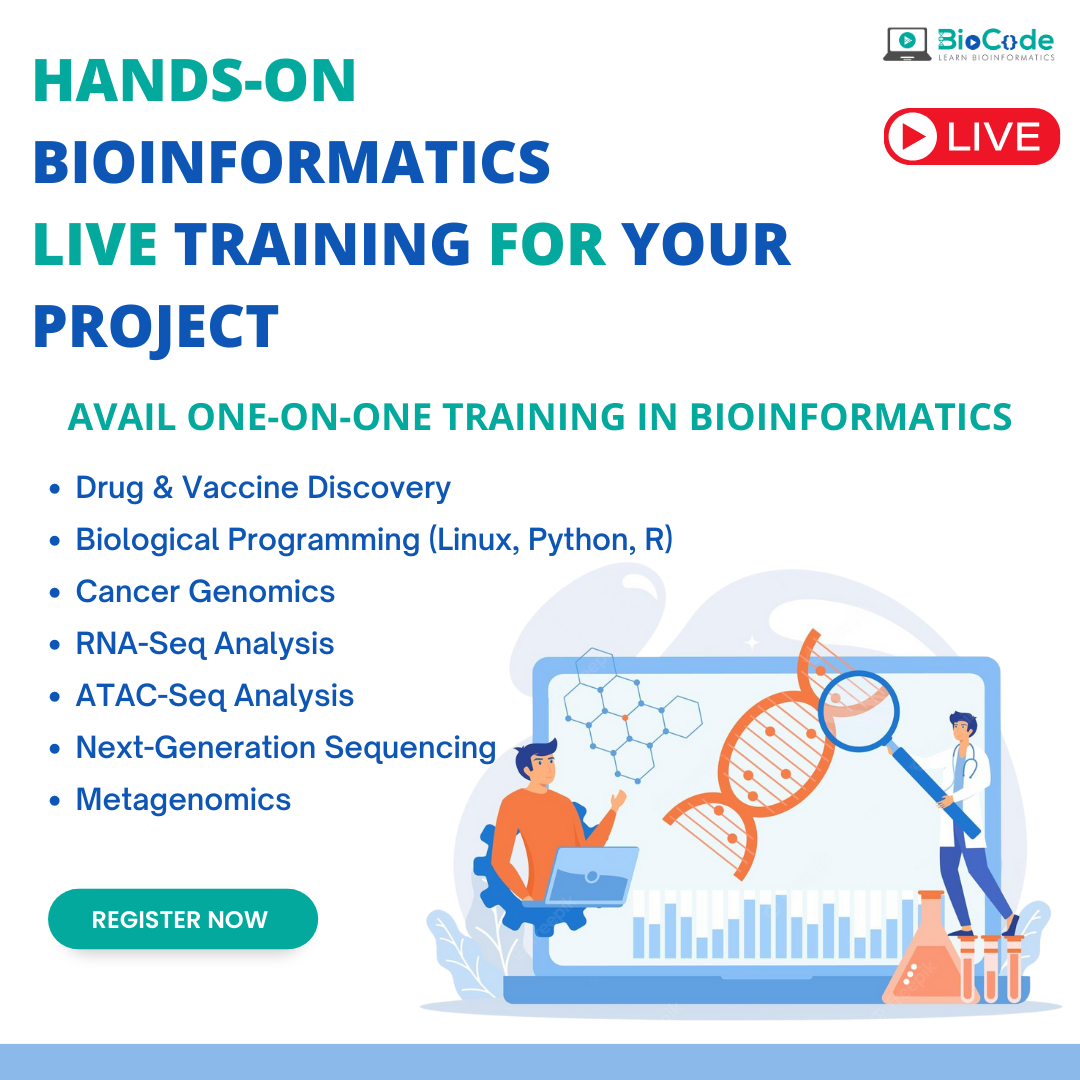Things about Bioinformatics Tutor
Things about Bioinformatics Tutor
Blog Article
Rumored Buzz on Bioinformatics Tutor
Table of ContentsAn Unbiased View of Bioinformatics TutorFacts About Bioinformatics Tutor UncoveredAbout Bioinformatics Tutor4 Easy Facts About Bioinformatics Tutor DescribedBioinformatics Tutor - The Facts
Of the total amount participants entailed in the training, 80% were students from public college institutions, while the staying 20% came from exclusive institutions. To get approved for a certificate of engagement, pupils were needed to go to at the very least 90% of the total training hours. As a result of this need, an excellent 95% of the individuals successfully acquired their certificates, having not just fulfilled the minimum participation criteria but additionally finished all designated tasks throughout the training.
Throughout the elevation of the COVID-19 pandemic, specifically in between June and August 2020, the project group was tasked with arranging specialized training in bioinformatics. This training was particularly focused on pupils from the research group Nucleus for Research in Applied Computing at the Federal College of Pará (UFRA) The adaptation to remote learning systems because of the pandemic produced a chance to explore brand-new mentor approaches and digital tools that boosted both reach and efficiency.
To respond to the growing need in the computing and life sciences areas, a sophisticated course was presented in 2020 entitled Intro to Artificial intelligence. This training course was created to supply an easily accessible yet detailed review of Artificial Knowledge methods, specifically as used in bioinformatics. The program was performed over 3 months, from October to December 2020, and was provided entirely online via the Google Meet system. This virtual layout enabled engagement from trainees throughout Brazil, most of whom may not have had the chance to participate in in-person sessions.
Some Ideas on Bioinformatics Tutor You Need To Know
A notable feature of this course was its focus on hands-on knowing. About 50% of the total training hours were dedicated to functional tasks where students built smart versions and applications in a series of scientific domain names, consisting of genes, molecular biology, and environmental data evaluation. Widely utilized devices and frameworks such as Spyder, Google Colab, Jupyter Notebooks, and Orange were integrated into the coursework. These systems allowed students to participate in real-time data control, version training, and algorithm testing.
Sixty of them were connected with numerous higher education organizations in the state of Pará, while the continuing to be twenty came from establishments found in 5 other Brazilian states. By introducing Artificial Intelligence in a relevant and practical context, the campaign served to connect the space between concept and real-world application, offering students with a solid structure for future study or employment in the area.
The training effort developed part of a more comprehensive scholastic outreach initiative referred to as the Bioinformatics on the Road job. This job has, throughout the years, introduced lots of trainees to the globe of bioinformatics and computational biology. The occasions More Info held under this umbrella campaign have actually taken place throughout multiple regions and years, as summarized in Table 1 (Listing of events, areas, years, and overall numbers of trainees and trainers)
Several of these teams, at first brought with each other by their participation in training events, have actually because gone on to generate independent scientific study in collaboration with regional scholastic institutions. The training not only fostered scientific thinking within the context of bioinformatics but also sparked collaborative partnerships that extended past the training atmosphere.
Bioinformatics Tutor Can Be Fun For Everyone
The job itself was conceptualized and arranged by megabytes and RR, who oversaw the preparation and implementation of each step. Lectures were supplied by a multidisciplinary team including MB, FA, EF, KP, JS, DM, SN, LP, LG, RR, ih, and a/c. The exact same group, omitting IH and RR, also worked as tutors for the functional training modules. Financing for the project was supplied through the give 88887.200562/ 2018-00 from CAPES. The authors prolong their thankfulness to every person who added to the awareness of this task, whether directly or indirectly, because its inception.
The Federal University of Pará's Workplace of Study (PROPESP/UFPA) likewise provided financial backing, especially for the manufacturing of the final manuscript. The writers state no commercial or financial problems of interest that might have influenced the study. In addition, all interpretations and point of views revealed in this write-up are solely those of the authors and do not necessarily reflect those of their particular institutions, the author, editors, or customers involved in the publication procedure.

The Ultimate Guide To Bioinformatics Tutor
From an instructional viewpoint, the teaching method utilized in the training was deliberately interactive. Courses were performed in a fashion that encouraged trainee participation and discussion, going past memorizing memorization to discover just how ideas are developed, applied in day-to-day life, and evaluated in academic setups. The educational viewpoint focused on nurturing both solid and battling pupils, giving customized assistance, and building self-confidence through continual mentorship and perseverance.

Each group, containing around 36 participants, was sustained by 3 mentors-- the majority of whom were postdoctoral researchers with specific proficiency. These advisors not just assisted develop the team tasks yet additionally promoted their implementation, ensuring that each research study concern was both relevant and appropriately challenging. The goal was to provide a naturally sensible context that individuals might check out through open-ended goals and access to curated datasets.
For extra understandings into the method and outcomes of this project-based learning approach, visitors are guided to S1 Text, that includes thorough summaries of the pedagogical structure, assessment approaches, and project motifs utilized in the training sessions.
Unknown Facts About Bioinformatics Tutor
Of the total amount participants entailed in the training, 80% were trainees from public greater education and learning organizations, while the staying 20% came from private establishments. To certify for a certificate of involvement, pupils were needed to go to at the very least 90% of the total training hours. Notably, beyond the trainees that enrolled in the training sessions, 7 experienced instructors got involved in delivering the training courses, while three specialized study professors collaborated the general training procedure. Around 50% of the complete training hours were committed to sensible tasks where pupils constructed smart designs and applications in a variety of clinical domains, including genetics, molecular biology, and environmental data evaluation. The training not just cultivated this clinical reasoning within the context of bioinformatics however likewise stimulated collaborative connections that extended beyond the training setting.
Report this page